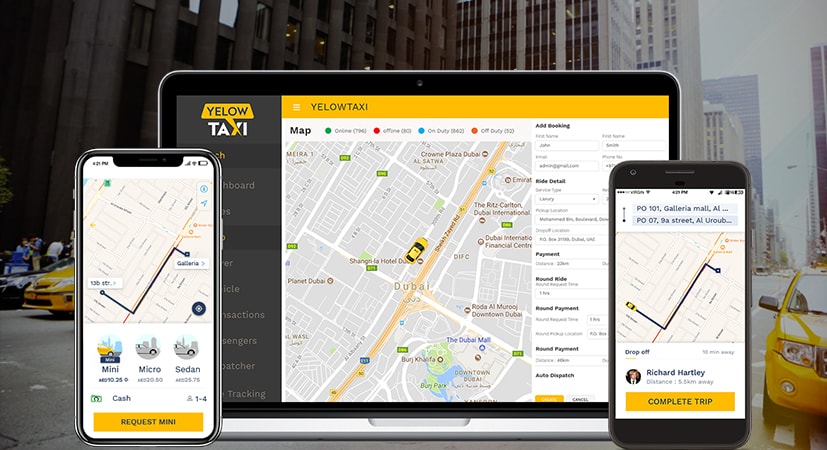![]()
The basic difference between a custom-built coded app and a ride-hailing software is that the first one is built based on the company’s requirements, while the other one has already been developed with general characteristics and is ready to serve the customer who wants to pay for its license or make a subscription.
It turns out that when the time comes to choose between one and the other, a series of doubts may arise that go beyond this simple differentiation. Learn about some of the most important ones below:
What are the advantages of a custom-built coded app?
One of the biggest benefits of a customization is the functionality tailored to the business needs. The team of developers works with the company, so that all terms, elements and usability are thought out so that employees feel comfortable using that application during their work routine.
Another interesting point is that the companies that build these systems usually offer a warranty period, in which they provide all the necessary support for bug fixes or operational adjustments after implementation.
What are the advantages of Ride hailing Taxi Application?
In the case of the ready-made program, the clearest advantage lies in immediate use. The company does not need to wait or participate in the planning, development and testing stages. Just hire and start using, unless you need to do some installation that requires more attention.
It turns out that, currently, many systems, regardless of category, follow the model of software as a service, or Software as a Service (SaaS), and are available on the web for direct access via browser.
Is the difference in price significant?
As with any made-to-measure product or service, you would expect the custom option to be priced a little higher. However, in the long run, a custom solution will represent a more effective type of technology investment for the company.
This is because a ready-made software, depending on its purpose, tends to quickly become outdated, as it has not been adapted to the business needs. It may be that the need for integrations and other adaptations appear as it is used by employees, and with customization, this should already be mapped in the early stages of development.
How better are the features?
Regarding the use of features, there are some differences between a custom-built coded app and a ride-hailing taxi application.
In a customized taxi app, the organization develops the functionalities according to its needs. And there is, so to speak, no features left or missing. As routines are being modified or added, it is possible to include them in the roadmap and implement them, scaling the application.
On the other hand, in custom-built coded apps, which serve several segments, an excess or lack of features is not uncommon. This leads to partial use or underuse of the application.
Integrations with legacy software
Integrations are not an issue in custom software, which is designed to adapt to the company’s environment and infrastructure.
With ride-hailing taxi app, whether it will work with the organization’s legacy applications is a crucial consideration.
If it does not integrate the company’s current tools and technologies, it will be necessary to invest so that the software works with the existing infrastructure and communicates with other software.
Deployment
Because custom software is built from scratch, its implementation process will only begin after the first Least Viable Product – MVP is made. Evidently, for this to already deliver value to users, methodologies such as lean inception and sprint design can be applied to guide development teams.
A ready-made ride-hailing taxi app offered by the market has a much shorter implementation process.
The first step, in this case, is the team training stage – onboarding – so that everyone involved knows and makes the best use of the tool, in addition to an adequate transition.
Update and maintenance
Many companies today face problems with their ready-made ride-hailing taxi app, especially when the manufacturer fails to update and maintain it, either because it has discontinued production or has even been sold.
Of course, we are talking about technologies whose infrastructure, languages and functionality are continually being updated so that they continue to deliver maximum value over time.
At this point, having the independence of your own product can avoid several problems related to the evolution of the application, such as having to make migrations from on-premise infrastructure to cloud and programming languages.
On the other hand, if the software is developed and maintained by internal IT, there is complete independence from the vicissitudes of the company that sells it.
The best model
If you need a program for goals common to most companies, such as financial control or something geared toward sales, then a ready-made template may serve your organization well.
If you need a more complex solution that solves specific difficulties, streamlines your operations and helps manage your processes, without a doubt, a customized option is the best.
To find the customized software that suits your needs, count on a committed company that develops an on-demand ride-hailing solution specialized precisely in customization.




